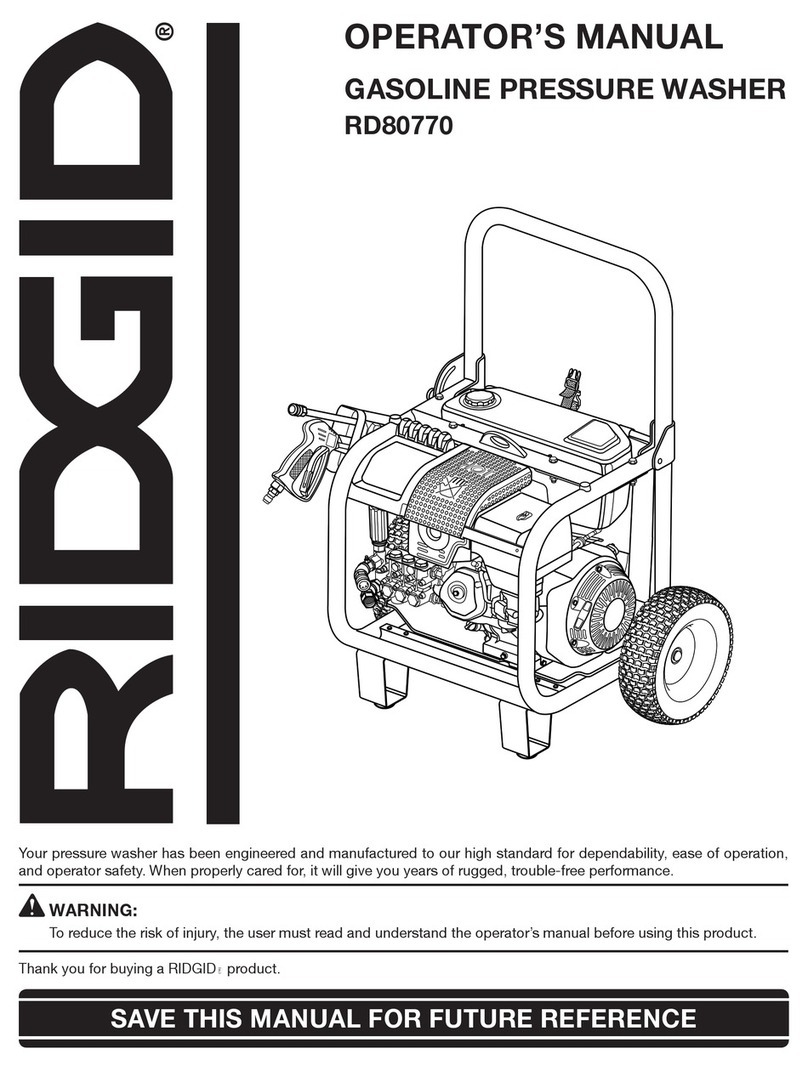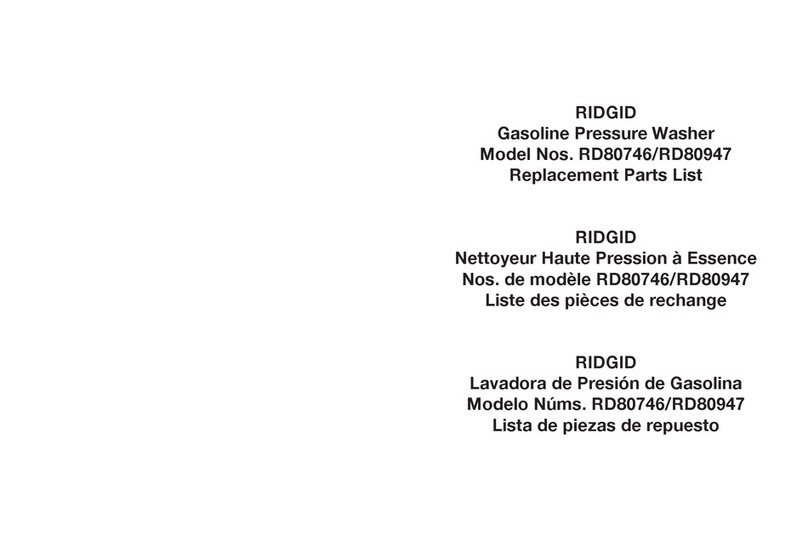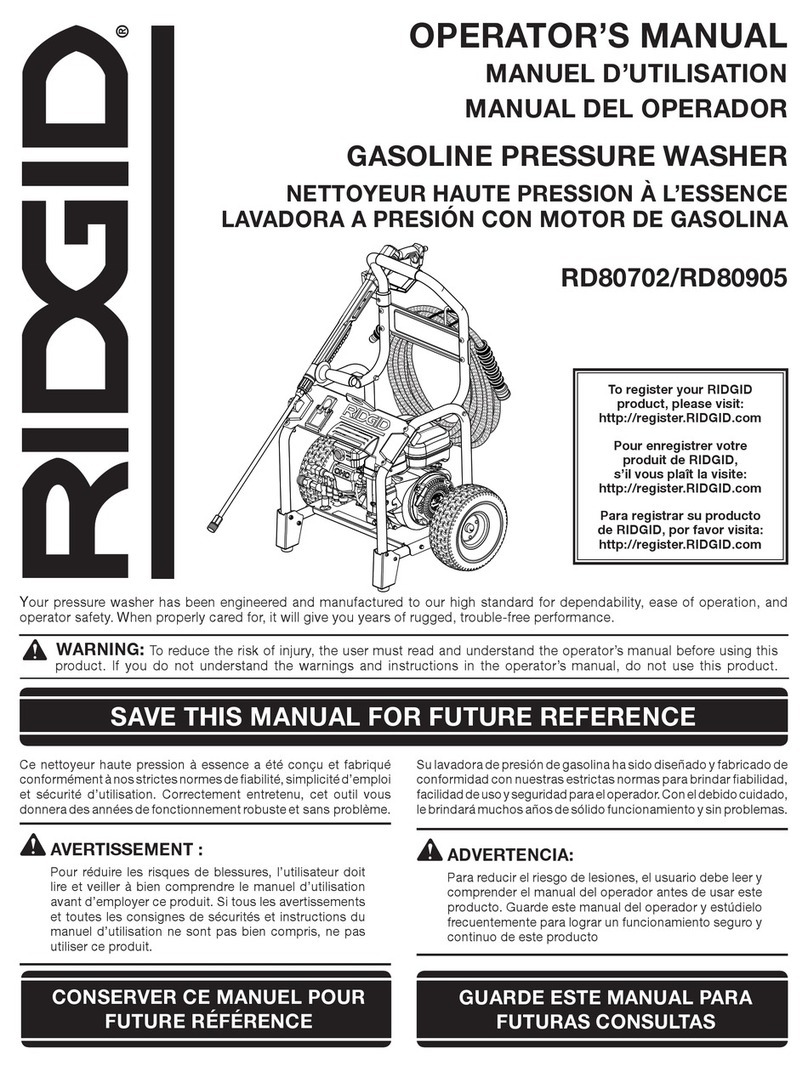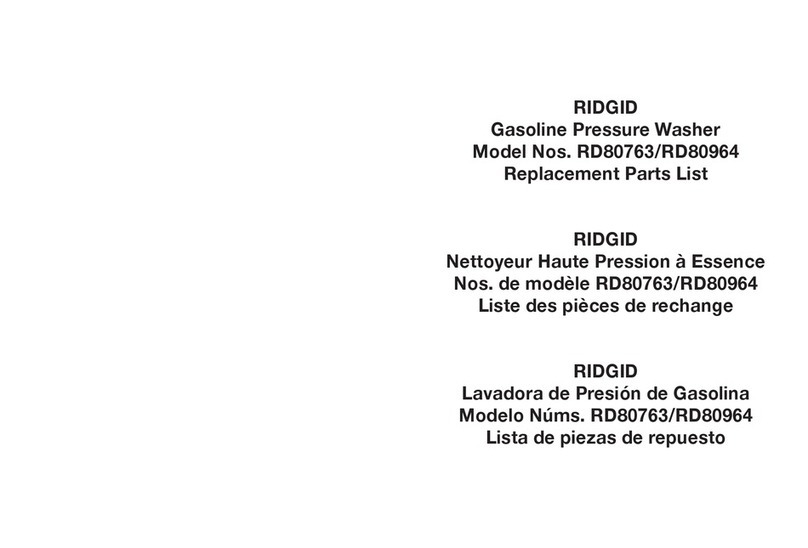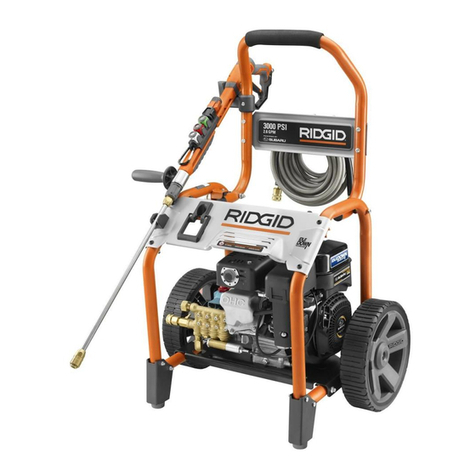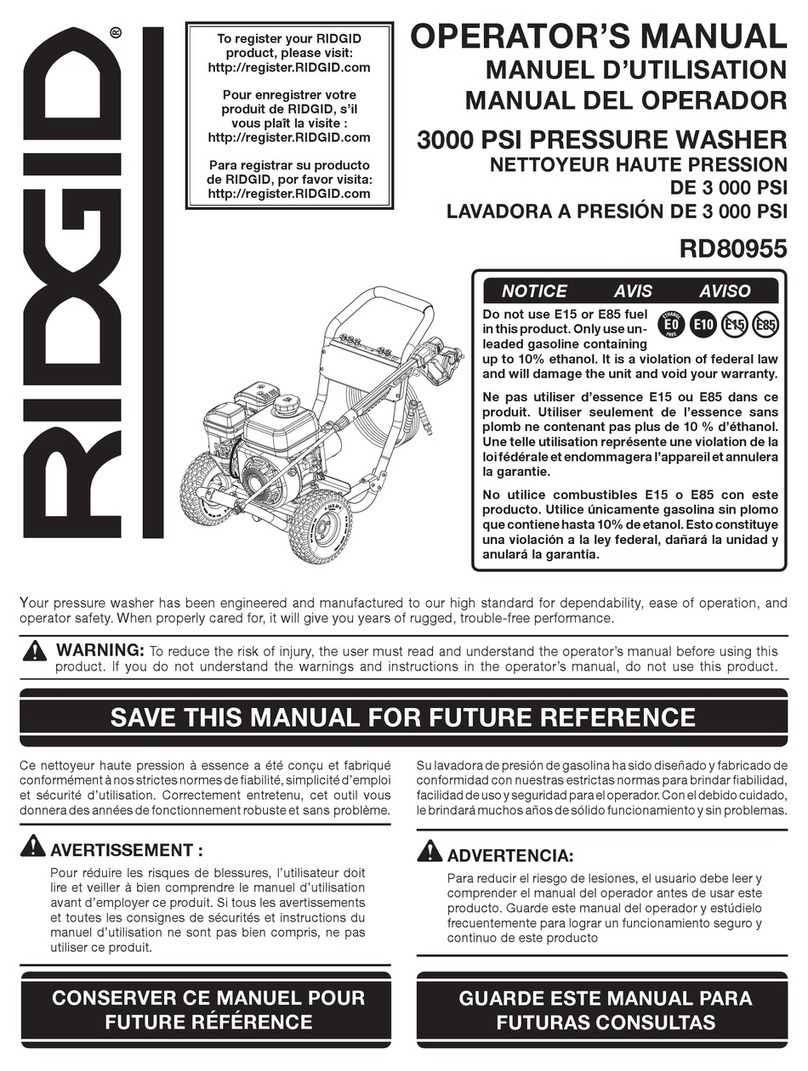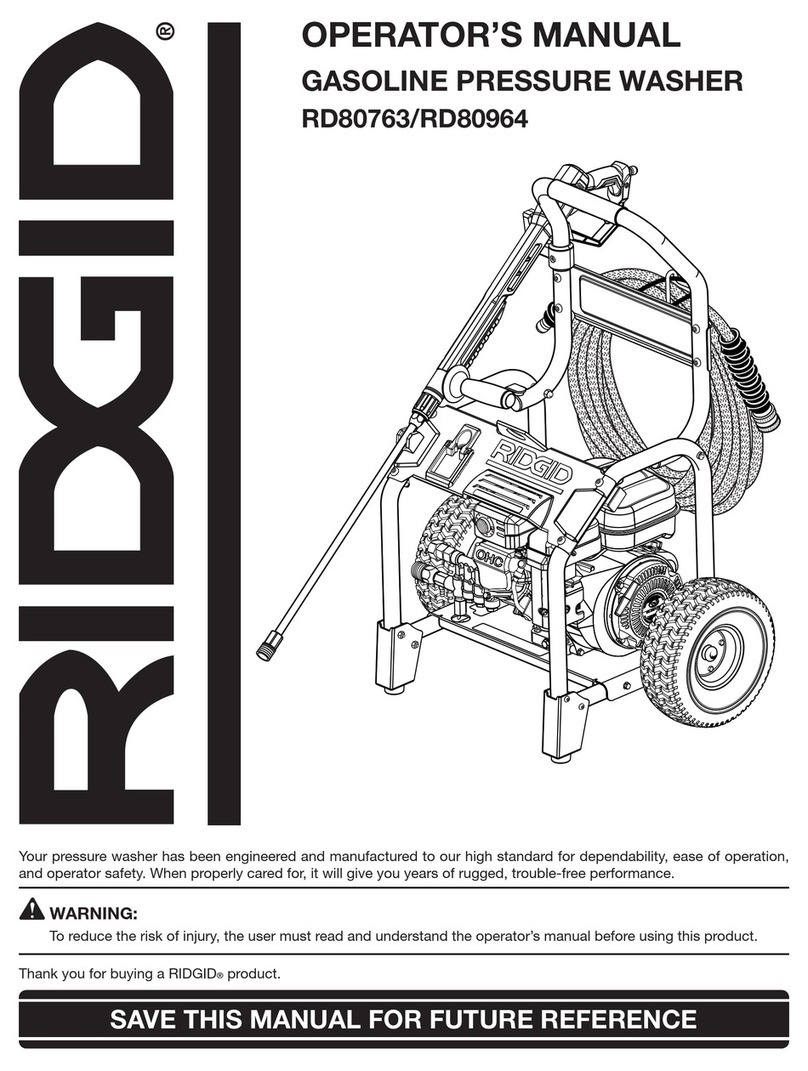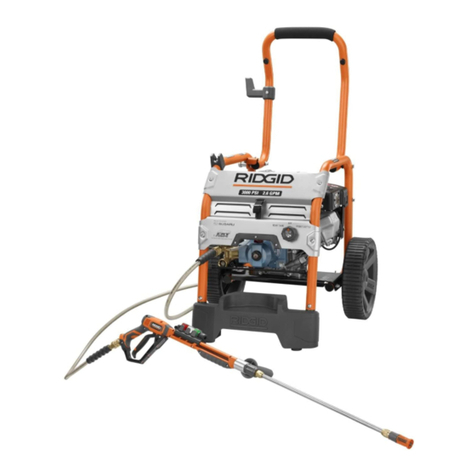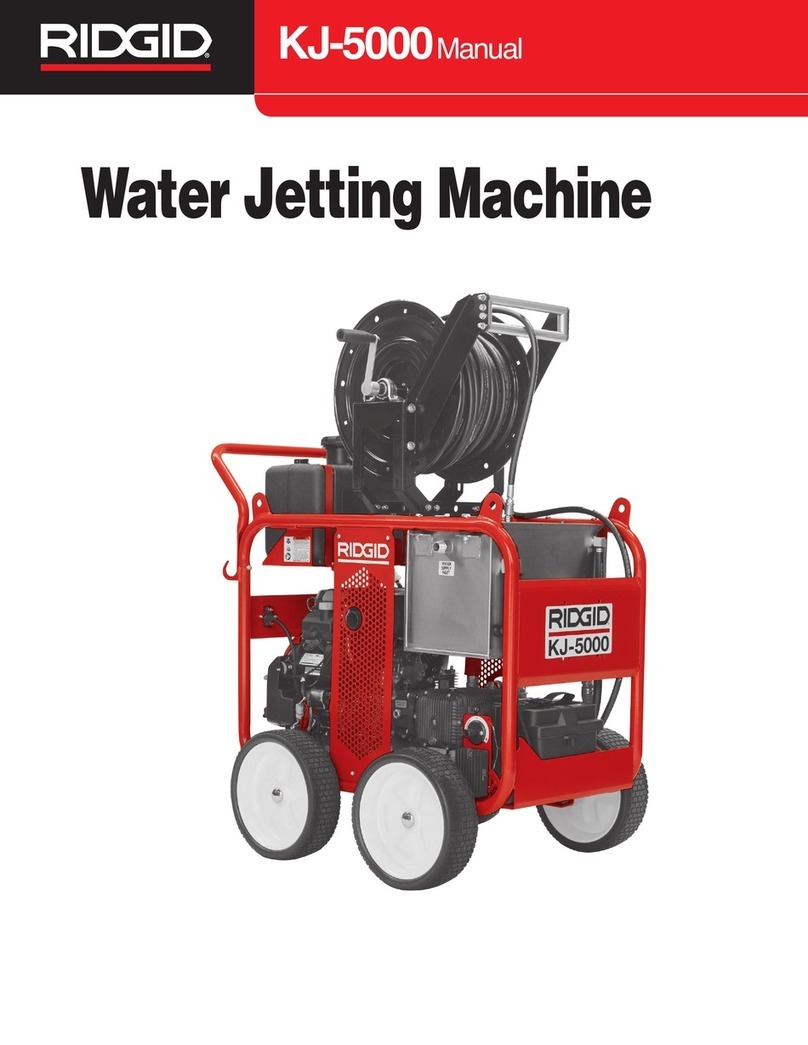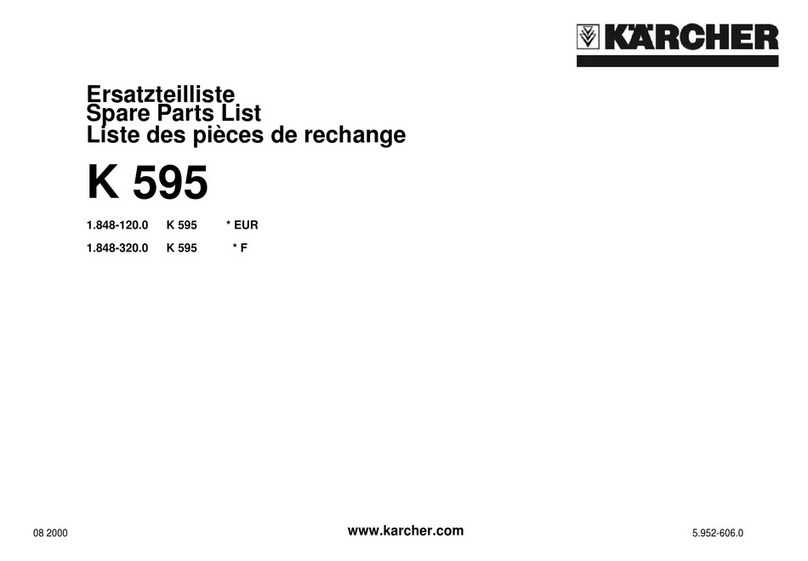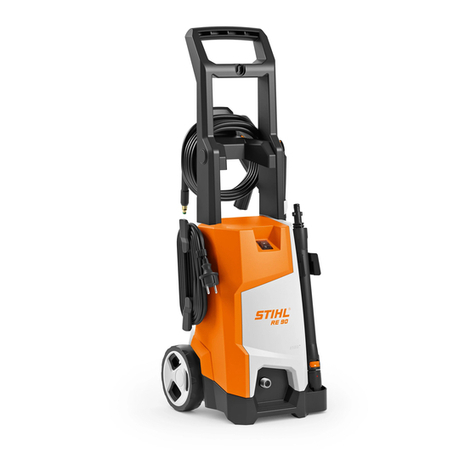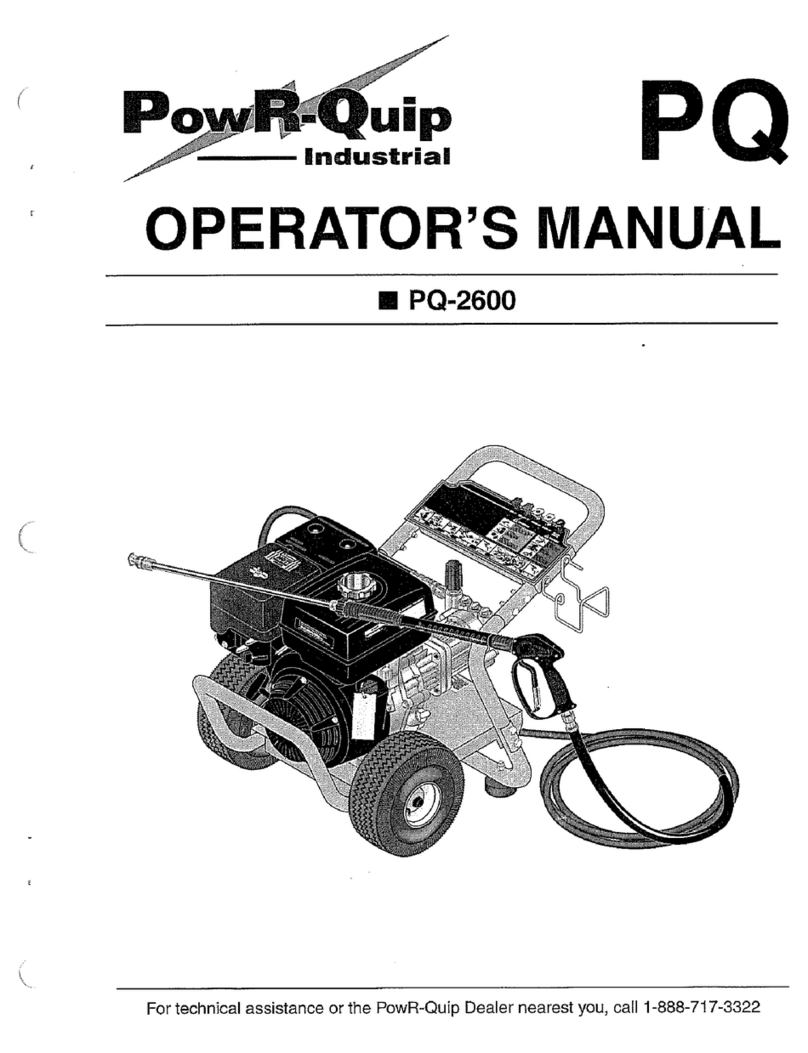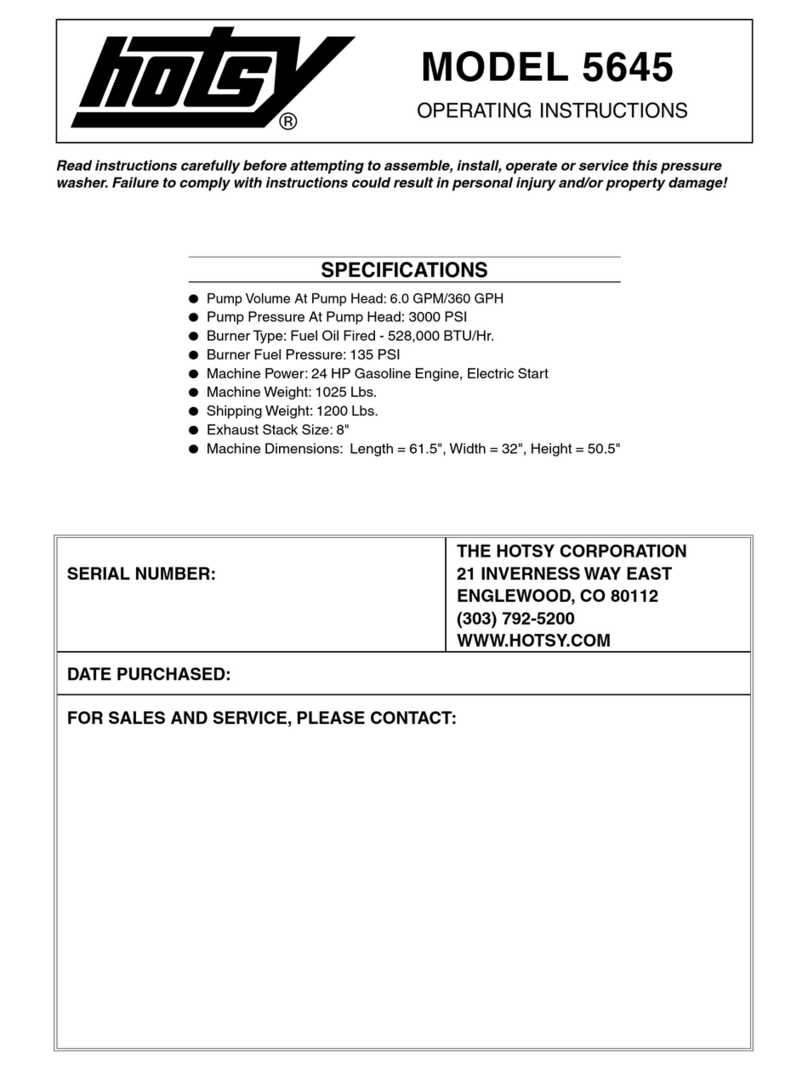
KJ-2200/KJ-3100 Water Jetting Machines
4
• Do not use the power tool if the switch does not
turn it ON and OFF. Any tool that cannot be con-
trolled with the switch is dangerous and must be
repaired.
• Store idle tools out of the reach of children and
other untrained persons. Tools are dangerous in
the hands of untrained users.
• Maintain tools with care. Keep cutting tools
sharp and clean. Properly maintained tools with
sharp cutting edges are less likely to bind and are
easier to control.
• Check for misalignment or binding of moving
parts, breakage of parts and any other condition
that may affect the tool’s operation. If damaged,
have the tool serviced before using. Many acci-
dents are caused by poorly maintained tools.
• Use only accessories that are recommended by
the manufacturer for your model. Accessories
that may be suitable for one tool, may become haz-
ardous when used on another tool.
Service
• Tool service must be performed only by quali-
fied repair personnel. Service or maintenance per-
formed by unqualified personnel could result in a
risk of injury.
• When servicing a tool, use only identical replace-
ment parts. Follow instructions in the Mainte-
nance section of this manual. Use of unauthorized
parts or failure to follow Maintenance Instructions
may create a risk of electrical shock or injury.
Water Jetter SafetyWarnings
WARNING
This section contains important safety information
that is specific to this tool.
Read these precautions carefully before using this
Drain Cleaning Machine to reduce the risk of electri-
cal shock or other serious personal injury.
SAVE ALL WARNINGS AND INSTRUCTIONS
FOR FUTURE REFERENCE!
Keep this manual with the machine for use by the op-
erator.
• Never operate the jetter with the hose end out-
side of the drain. Hose can whip, causing striking
injuries and spray can penetrate skin and cause seri-
ous injury.
• High pressure water can inject under skin result-
ing in serious injury including amputation. Do
not direct spray at people or animals.
• Do not operate jetter above pressure rating or
140°F / 60°C (inlet water temperature). This in-
creases the risk of injury, including burns, and dam-
age to the jetter.
• Onepersonmustcontrolboththejettingprocess
and the foot valve. Always use the foot valve. If
the jetter hose comes out of the drain, the operator
must be able to shut the water flow off to reduce the
risk of the jetter hose whipping, causing striking and
high pressure injection injuries.
• Always use appropriate personal protective
equipment while handling and using drain
cleaning equipment. Drain may contain chemicals,
bacteria and other substances that may be toxic,
infectious, cause burns or other issues. Appropriate
personalprotectiveequipmentalwaysincludessafe-
ty glasses and gloves, and may also include equip-
ment such as latex or rubber gloves, face shields,
goggles, protective clothing, respirators, and steel
toed footwear.
• Practice good hygiene. Use hot soapy water to
wash hands and other body parts exposed to
drain contents after handling or using drain
cleaning equipment. Do not eat or smoke while
operating or handling drain cleaning equipment.
This will help prevent contamination with toxic or
infectious material.
• Do not spray toxic or flammable liquids. This will
reduce the risk of burns, fire, explosion or other in-
jury.
• Gasoline and its vapors are highly flammable
and explosive. See engine manual for precautions
to reduce the risk of burns, explosions and serious
injury while handling and using gasoline.
• Engines produce carbon monoxide, a colorless,
odorless poison gas. Breathing carbon monox-
ide can cause nausea, fainting or death. Do not
start and run engine in an enclosed area, even if
doors and windows are open. Only operate outside.
• Hot surfaces can cause burns and fire. Keep body
parts and flammable material away from hot surfac-
es.
• Read and understand this manual, the engine
manual and the warnings and instructions for all
equipment being used with this tool before op-
erating. Failure to follow all warnings and instruc-
tions may result in property damage and/or serious
injury.
The EC declaration of conformity (890-011-320.10) will
accompany this manual as a separate booklet when re-
quired.
www. .com information@itm.com1.800.561.8187

